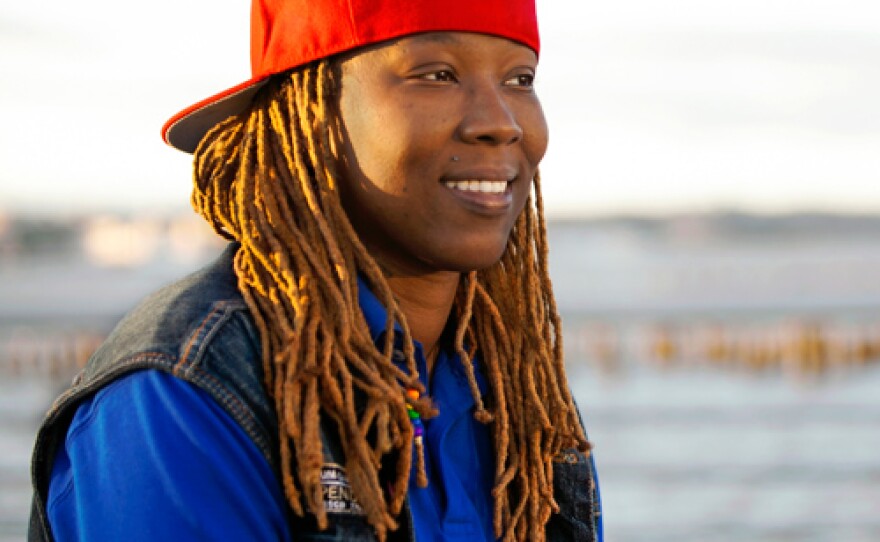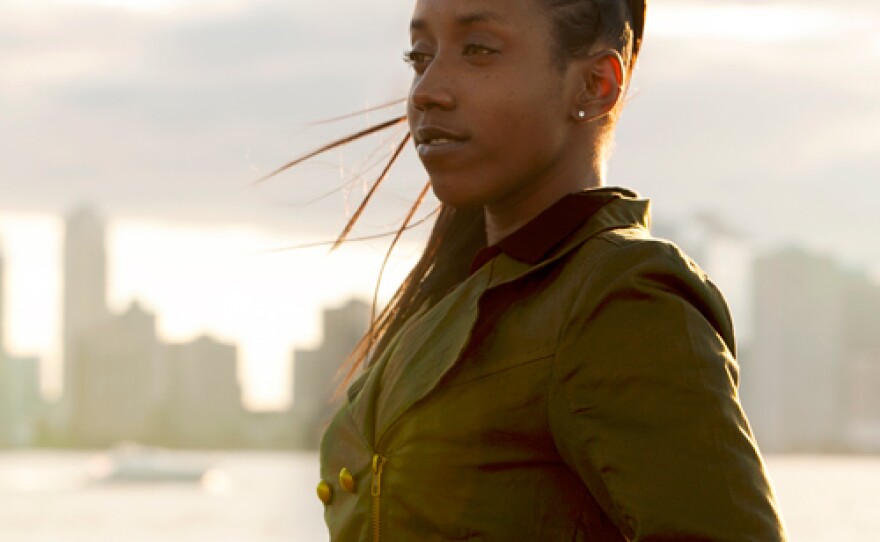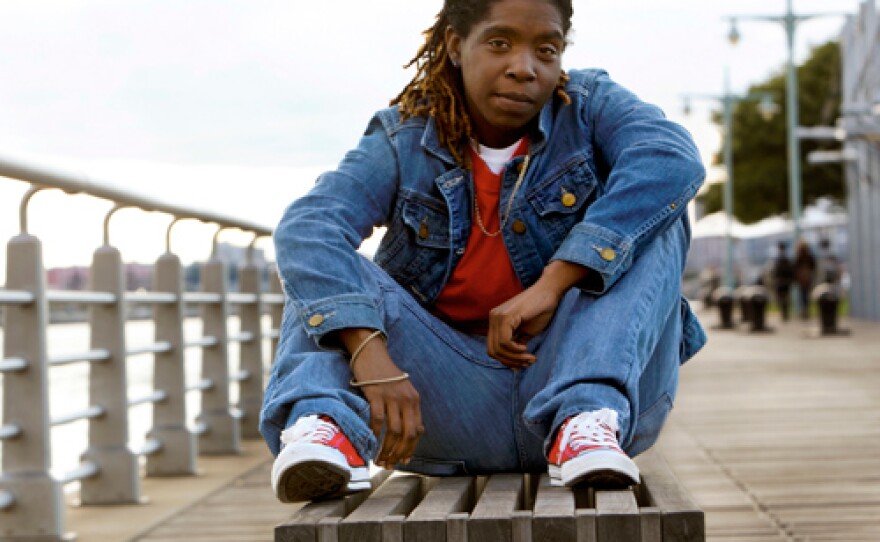It all began on the night of Aug. 18, 2006 on the streets of Greenwich Village in New York City. The gay-friendly neighborhood was considered a safe haven by seven close-knit African-American lesbian friends from Newark, New Jersey. It was a place they went to have a good time, to be themselves. But as the award-winning documentary “Out In The Night” chronicles, on one hot summer night, for these women, the Village would prove anything but safe.




The film opens with audio clips from police radio dispatches describing “officers fighting with gangs, Bloods and Crips” followed by a reference to “approximately five female blacks,” then to a “gentleman that was stabbed by . . . girls.” There were a number of inaccuracies in these dispatches, but the pictures they painted set the stage for the sensational story of four young women—Renata Hill, Patreese Johnson, Venice Brown and Terrain Dandridge—that followed.
The film marks the first time that the women have told their side of the story. Two women are the film’s primary focus: Renata, a single mother of a 5-year-old son, and Patreese, a petite 4-foot-11-inch femme-identified poet. As they and their friends strolled beneath the neon lights of the Village in 2006, they were confronted by 28-year-old Dwayne Buckle, who was selling DVDs.
“Let me get some of that,” he said to Patreese, pointing below her waist. When she told him she was gay, he threatened to force the women “straight” through rape. He threw a lit cigarette, yanked out a handful of Venice’s hair and began to choke Renata. Thinking one of her friends was “about to die,” Patreese pulled a knife from her purse and stabbed him. Strangers jumped in to defend the women and the fight escalated. The entire incident, captured by security cameras, lasted four minutes. When it was over, everyone walked away.
The women were immediately arrested, even though the footage shows many people were involved in the altercation and the officers said the man’s wound appeared to be minor. The seven women were charged with gang assault, assault and attempted murder. Three pled guilty to avoid a trial and potentially lengthy prison time. Renata, Patreese, Venice and Terrain maintained their innocence and their right to self-defense.
A media frenzy followed. “The headline writers had a very good time,” says New York Post writer Laura Italiano about her paper’s “Attack of the Killer Lesbians” story. Other headlines included “Girls Gone Wilding” and “Man Is Stabbed in Attack After Admiring a Stranger.”
“I wanted to understand why this man was considered, in the mainstream news media, as a potential suitor and not a threat,” says filmmaker blair dorosh-walther. “Why weren’t these women seen as survivors of violent, homophobic harassment? And why were a group of friends with no criminal records, who were not a gang, being charged as a gang?”
“People kept hearing ‘gang assault,’” says attorney Lori Cohen who, with Susan Tipograph, defended Renata at trial, “and it brings up an image in your head that doesn’t really apply here. . . . You see [the man] in the surveillance tape. He clearly was coming at them in an aggressive manner.” But, explains New York Police Department arresting officer Christopher O’Hare, “By law if three or more people are involved in beating someone, it’s a gang assault.”
Despite the man’s testimony at trial that the women came out of nowhere, that all he said was “hello” and that he was defenseless and terrified, Laura Italiano says, “Myself and other members of the press were getting a fuller picture of his views on the right of men to ogle women and shout out things as they walked by.”
In April 2007 the four women were found guilty. Two were sent to Bedford Hills Correctional Facility, a maximum security prison, and two were sent to Albion Correctional Facility, 48 miles from the Canadian border. The women and their families speak candidly in “Out In The Night.” Renata, who came out at age 20, reveals that she was raped by her mother’s boyfriend for many years; he was sentenced to five years in prison compared to her eight. She and her mother were starting to repair their relationship at the time of the attack, but Renata’s mother died while Renata was still in prison. After Renata lost custody of her son, she was diagnosed with PTSD.
We meet Terrain’s mother, Kimma, exhausted from taking the bus to Albion every other weekend to see her daughter. Another frequent visitor is Patreese’s sister, Tanisha, who is Muslim and accepts Patreese for who she is. And while it’s difficult to picture soft-spoken, tiny Patreese wielding a knife at all, she says that the only reason she carried a weapon that night was that her brothers told her always to be ready to protect herself after their 17-year-old brother was shot and killed by a police officer in their Newark neighborhood. “You’re real small,” she recalls them telling her. If her brothers weren’t there to protect her, they wondered, “How you going to defend yourself?” Venice, Patreese’s childhood friend, just wants her to come home.
By 2013 all of the so-called “New Jersey 4” had been released from prison, but the issues their case brought into focus continue to challenge. “I think one of the reasons this story feels so important to me is all the gray areas that it covers,” says the filmmaker. “This case is not cut-and-dried; it is messy and complicated. As we move beyond marriage equality as the central LGBT issue, the women’s experiences reveal so many more that need to be addressed: feeling safe on the street. The right to defend yourself without fear of imprisonment. Addressing police brutality. And representations of spectrums of gender that aren’t neatly ‘male’ or ‘female.’”
“Out In The Night” is a co-production of The Fire This Time The Film, LLC and the Independent Television Service (ITVS), with funding provided by the Corporation for Public Broadcasting (CPB). Produced in association with American Documentary | POV.
Past episodes of POV are available for online viewing. POV is on Facebook and Google +, and you can follow @povdocs.





